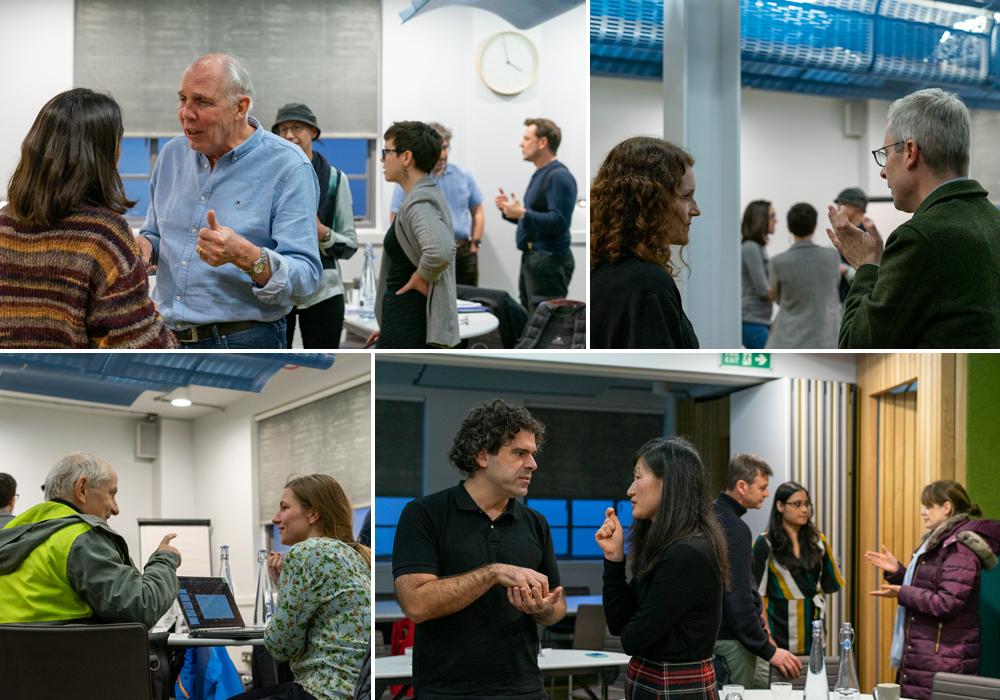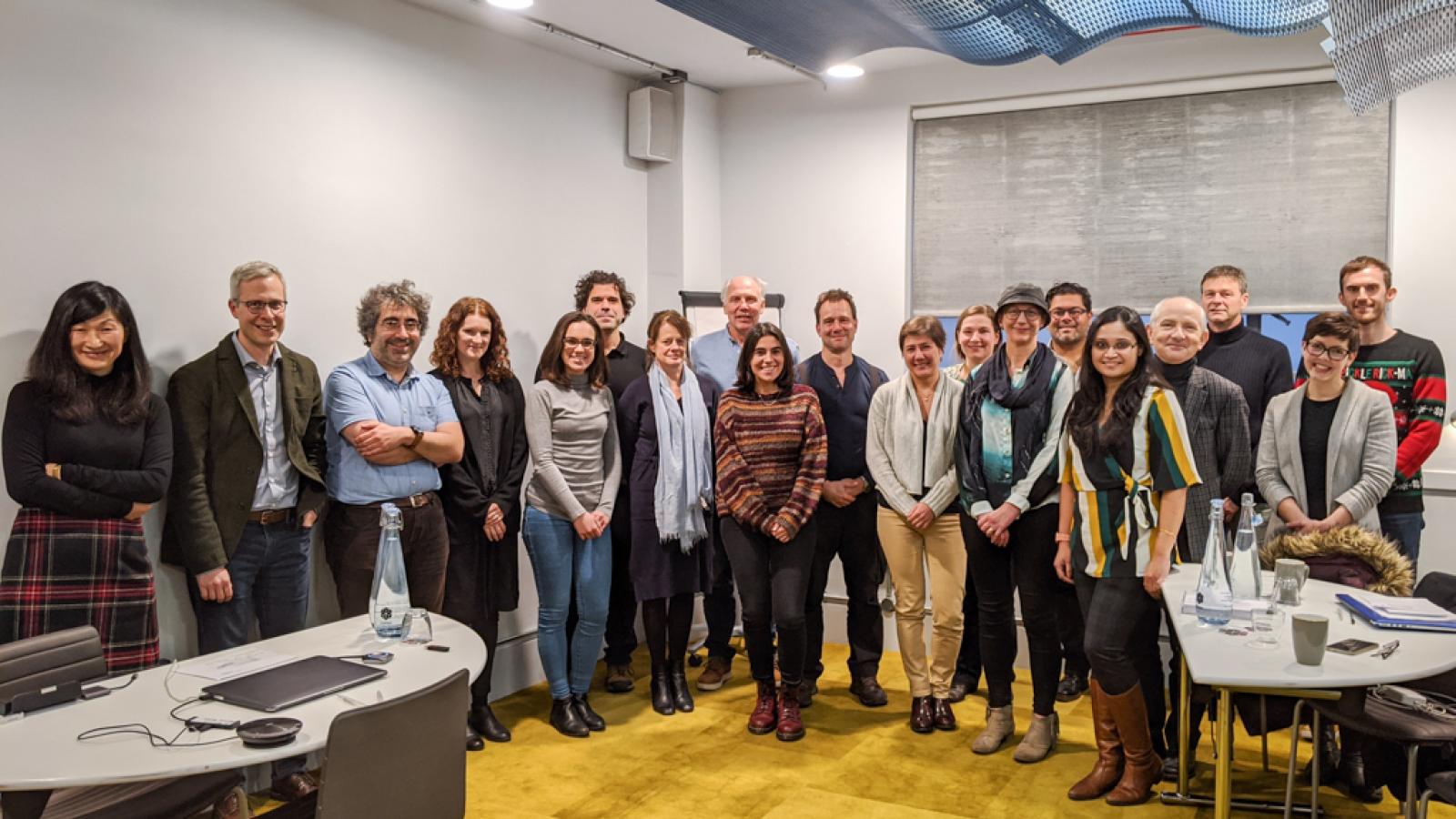As part of our ‘Neuroinflammation Theme’, we held a workshop in December that brought together researchers from across the institute and beyond to share expertise and best practice on the use of induced pluripotent stem cell (iPSC)-derived microglia. Delving into topics such as reproducibility, cell line characterisation and microglia phenotype and function, attendees discussed and agreed on actions that would benefit the whole of the field moving forward.
iPSC technology has hugely advanced since its groundbreaking discovery over a decade ago, for which the researchers Shinya Yamanaka and Sir John Bertrand Gurdon were awarded the 2012 Nobel Prize for Physiology or Medicine. iPSCs are revolutionary in that they are derived from cells taken directly from adult tissue (e.g. human skin/blood) and can be turned into any other cell type in the body and multiply indefinitely. A major advantage of this is that the iPSCs produced are patient-specific allowing for an understanding of how human genetics impacts on phenotype and function and even greater personalised investigation to be undertaken. For brain researchers, iPSCs are a fantastic tool to probe human disease given the inaccessibility of human brain material and the constraints of working in animals or patients themselves.
In this one-day workshop, attendees discussed a type of iPSC that had been transformed into resident immune cells of the brain, microglia. As with other widely adopted but complex techniques, challenges have arisen to maintain consistency and therefore experimental reproducibility when many labs across the world are using the technology. Taking advantage of the UK DRI’s growing network, Prof Hugh Perry and Prof Caleb Webber convened several experts to address this issue and the need for robust methods and reliability in research output.

There was lively and productive discussion generated alongside the excellent speaker presentations (see programme below), with the main recommendations from the day being:
Sharing of protocols to improve reproducibility
While it was clear that models should improve over time, many attendees felt that this had led to ‘inflated’ protocols where researchers may be unsure of the purpose or need for particular steps and reagents. To monitor this evolution in methodology and pool expertise, attendees recommended the sharing of protocols among the community. UK DRI will look at a fast and efficient means to do this both within and beyond the institute.
Adopting universal reference cell lines to facilitate comparisons
With the diversity of experiments taking place involving iPSC-derived microglia, there are several cell lines in use across the UK DRI. However, in order to compare experiment outcomes directly, it would be hugely beneficial for researchers to adopt additional universal or UK DRI-wide reference cell lines into all experiments. Following a survey of cell lines currently used, we will look at popular and suitable line/s to recommend for this purpose.
Assessing developmental stage and phenotype of microglia
One issue when studying iPSC-derived microglia is the developmental stage achieved when cells are fully differentiated, which may have a significant impact on how well this mirrors the phenotype and function in humans. Without a reliable panel of phenotypic markers for microglia, e.g. homeostatic vs. activated, it is currently extremely hard to assess their developmental stage or reactive state. The group suggested that a multiangle approach, helped by advances in transcriptomics, proteomics (e.g. secretome) and functional assays, would be hugely beneficial for consensus panels.
However, it was agreed that any protocol is unlikely to yield a model that accurately replicates the human brain in all its complexity. The first consideration should be whether the protocol is fit for purpose to address each specific research question.
New models and opportunities for the field
Throughout the workshop there was a fascinating glimpse of what the future holds for the field, including Prof Valentina Escott-Price advocating for cell lines carrying multiple common risk variants, with polygenic risk scores already teaching us so much about neurodegenerative diseases. Additionally, Dr Renzo Mancuso presented his recent success in transplanting human microglia into mouse in vivo and Dr Jin Qui showed her latest developments using mixed cell cultures – both of which highlighted the importance of microenvironment on microglia homeostasis.
We would like to thank all of those who attended and contributed to the stimulating and constructive discussion. Actions are already underway and we’ll keep you up to date on new initiatives.
If you would like to be included in future events related to the neuroinflammation theme and/or iPSCs, please contact Prof Caleb Webber, UK DRI at Cardiff, and Prof Hugh Perry, UK DRI HQ.
Programme from the day:
iPSC microglia differentiation: seeking for a consensus protocol
- Sally Cowley (University of Oxford) – Protocols – Pros and Cons
- Poulomi Banerjee (University of Edinburgh) – Generation of pure monoculture
- Nick Allen (Cardiff University) – Choosing the appropriate controls and agreeing common control lines
- Valentina Escott-Price (Cardiff University) – Polygenic lines
iPSC microglia-omics: importance of data analysis in ‘unperturbed/resting’ state
- Jennifer Pocock (UCL) - Can we produce a list of in vivo phenotypes expected of our models +/- disease?
- Caleb Webber (Cardiff University) – Transcriptomics assays and analysis
- Sally Price – Medicines Discovery Catapult (MDC)) – Proteomics and metabolomics
In vitro and in vivo assays to assess microglia function
- Renzo Mancuso (VIB, Leuven) – Microglia hiPSCs in mouse brain in vivo
- Jing Qui (University of Edinburgh) – Microglia interactions with astrocytes and neurons
Article published: 29 January 2020
